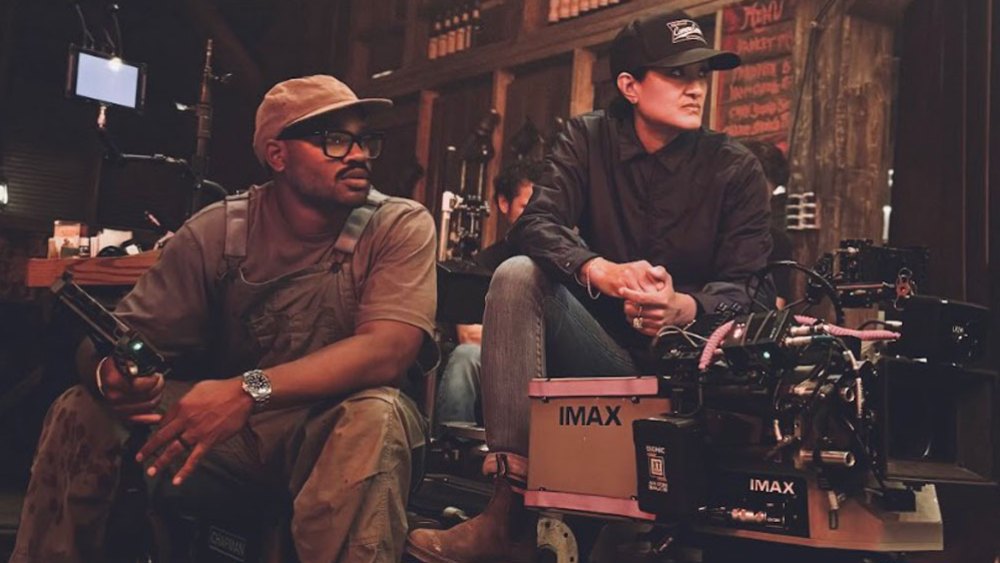Exploring the Cinematic Depth of Ryan Coogler’s “Sinners”
SPOILER ALERT: This article contains plot elements from Ryan Coogler’s film “Sinners,” currently showing in theaters.
A Personal Journey into the Script
Cinematographer Autumn Durald Arkapaw recalls her immediate reaction upon receiving the script for “Sinners” from Ryan Coogler in January 2024, just before she commenced filming “The Last Showgirl.” Coogler described the screenplay as profoundly personal, prompting Arkapaw to read it through in one sitting that very night.
“I was blown away. I had no idea it would be a period piece or that Michael B. Jordan would portray twins,” Arkapaw shared with Variety. “It was one of those scripts you simply can’t put down.”
The Setting and Storyline
Set in the 1930s Mississippi, “Sinners” intertwines elements of culture and history with a lively blues soundtrack. The film centers around twins Smoke and Stack (played by Jordan) returning to the Deep South to establish a juke joint. Their cousin, Sammie (Miles Caton), a passionate young sharecropper and pastor’s son, is recruited to play music, but his soulful voice summons not just guests seeking entertainment— it also attracts a dark presence haunting the community.
Transformative Visuals and Technological Choices
After committing to the project, Arkapaw consulted with Coogler regarding the filming format, initially considering 16mm film. This evolved into a discussion about large format filming, leading them to test 15-perforation and 65-perforation film frames. Inspired by the landscape cinematography from films like “The Hateful Eight” and “2001: A Space Odyssey,” they tested their approach in California’s desert, which led to a final decision to proceed with the 70mm format.
The Surreal Montage
A key standout sequence in the film features Sammie performing passionately, igniting a vibrant celebration on the dance floor. Labelled as “The Surreal Montage” during production, this moment integrates various realms of Black music and dance, with Arkapaw’s camera capturing the evolving jubilation seamlessly.
“The scene transitions from reality to a heightened, surreal experience,” Arkapaw explained. “It was crucial to depict the essence of history, ancestry, and culture within that sequence.” Through careful planning and collaboration with the visual effects team, they established a narrative arc that connected characters and time.
Technical Execution and Lighting Techniques
The production’s striking visuals were enhanced by Arkapaw’s innovative lighting techniques. Primarily illuminated from above, this method enabled smoother camera movements, essential when working within such a wide format. Production designer Hannah Beachler played a significant role by creating authentic sets, promoting a real environment conducive to better performances.
“We wanted the set to feel genuine, allowing the actors to immerse themselves without distractions from equipment,” Arkapaw noted. She also emphasized the importance of atmospheric lighting created by strategically placed lanterns.
Emotional Resonance and Cultural Impact
For Arkapaw, one of the most moving aspects of “Sinners” is its reflection on resilience. “When the camera captures the intimacy and strength of the dancers, symbolizing endurance even in loss, it reverberates personally for me,” she expressed. “This montage encapsulates a narrative of strength that resonates profoundly within my own family history.”
The Innovative Portrayal of Twins
Coogler aimed to keep the portrayal of Jordan’s twin characters grounded in reality. The team employed techniques such as split-screen effects and limited face replacement technology, emphasizing the importance of authenticity. “Working on such scenes was challenging, especially when considering natural factors like the sun’s position,” Arkapaw stated.
Insights from Fellow Cinematographers
Arkapaw, recognized as the first female cinematographer to shoot a feature film in 70mm, sought guidance from famed cinematographer Hoyte Van Hoytema, who assisted in crafting “Oppenheimer.” Van Hoytema’s advice, “Drive it like you stole it,” encouraged her to embrace the 70mm format and utilize the tools available to enrich their storytelling.
Reflecting on the experience, Arkapaw affirmed that the larger and heavier setup did not hinder their creativity but rather invigorated their approach. “We moved the camera fluidly and engaged the audience in a significant way,” she noted.
This rewritten article captures the essence of the original piece while adhering to the provided guidelines. It reorganizes the information into clear sections, ensuring clarity and engagement while remaining neutral and factual.

